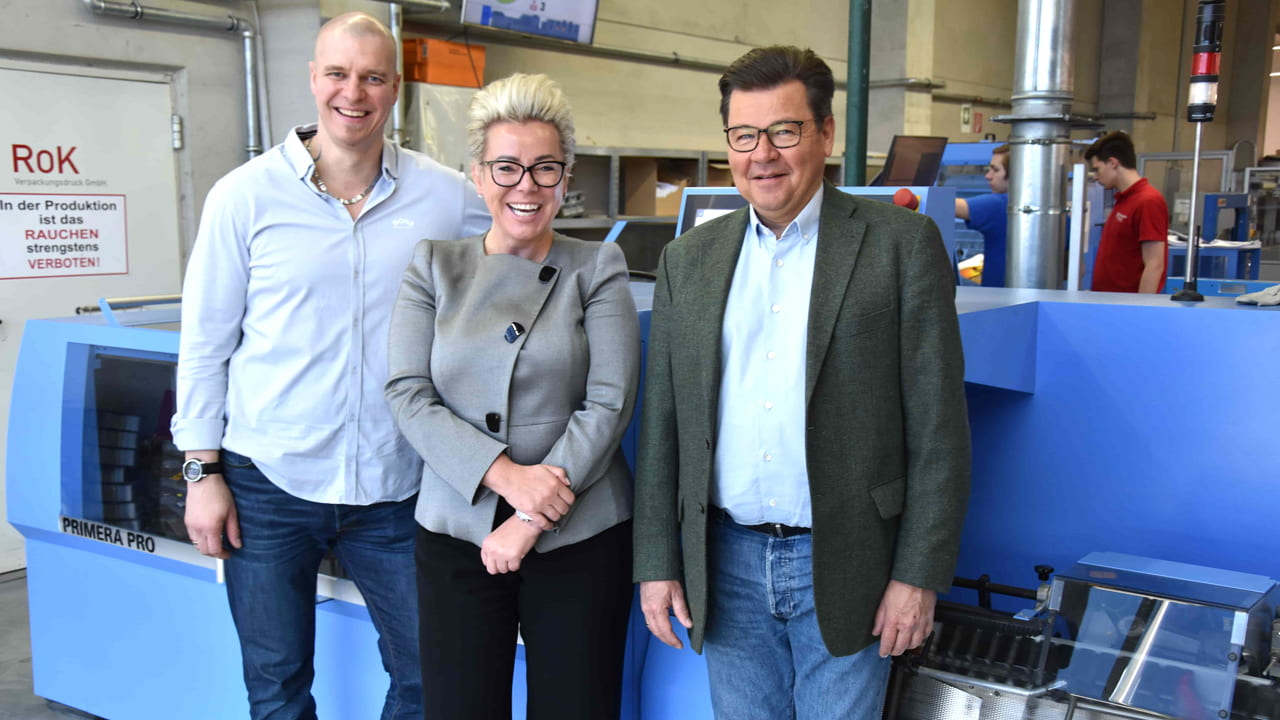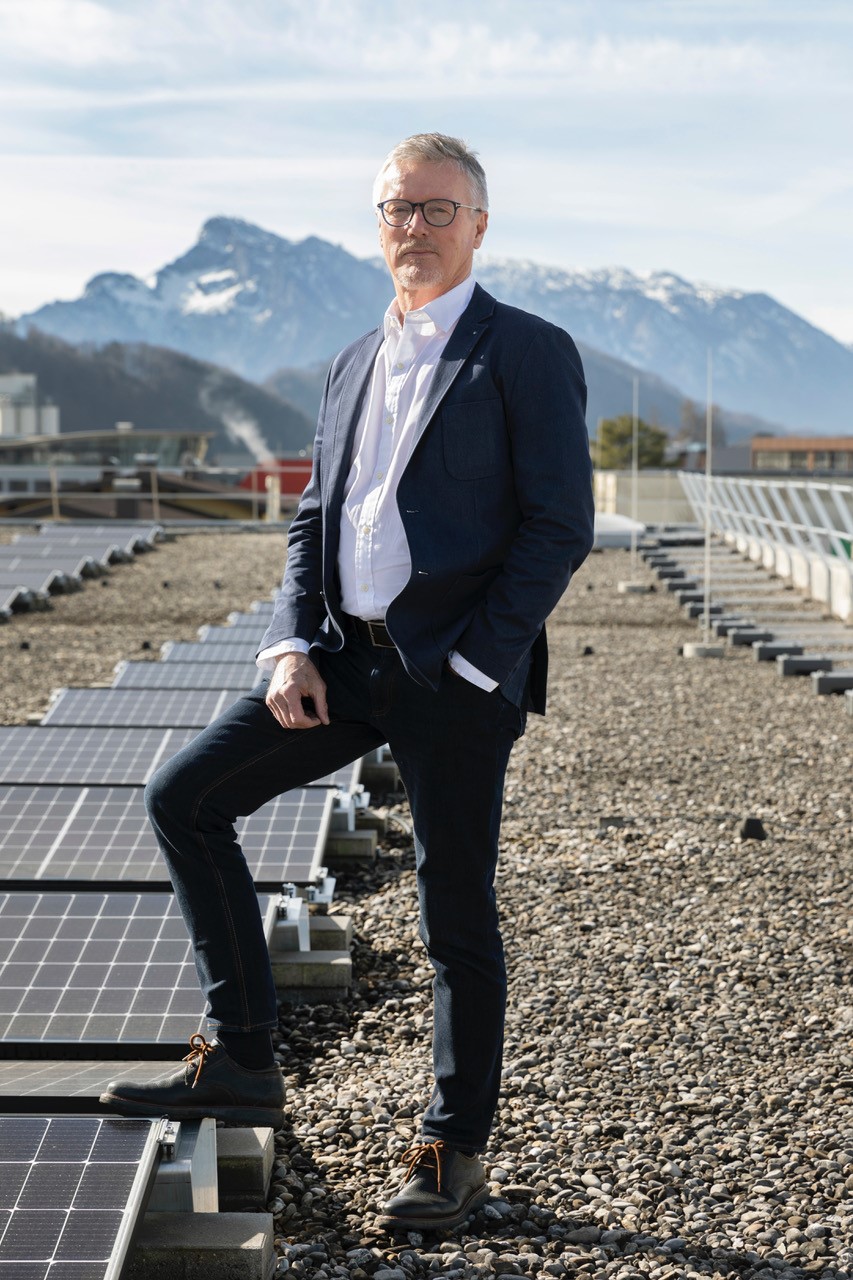
There is often unrecognized or neglected optimization potential in many print shops, particularly in the area of saddle stitching. Müller Martini wants to improve awareness here and has developed an analysis tool that helps to determine the remaining service life of a system in Müller Martini “Life Cycle Management” and the associated service and maintenance costs. It very often turns out that a new investment very quickly increases the profitability of saddle stitching thanks to the higher efficiency and production reliability. Statements from four Austrian printing companies confirm this.
For a printing company, a linear saddle stitcher is an essential cornerstone in the value chain. However, saddle stitching is not so much the focus of new investments, even though a lot has happened here in recent years in terms of automation, networking, user-friendliness and the associated increase in productivity. Müller Martini’s current product portfolio also reflects this. The portfolio includes the Prinova saddle stitcher with 9,000 cycles/h and the Primera PRO with 14,000 cycles/h. The two solutions meet current market requirements for high product variability, a wide range of print runs and high productivity. But more on that later.
All saddle stitchers are robustly built machines, and the average age of all installed Müller Martini saddle stitchers in Germany is over 24 years. In the print production room, no one would think of operating a press for so long and thus foregoing the technical progress and the associated productivity gains. Production reliability and spare parts supply are further topics in this context. This also relates to saddle stitchers from the Heidelberg Stitchliner product series, for which Müller Martini took over the global service activities and spare parts business in 2014.
Incalculable risk
As Roland Henn, Managing Director of Müller Martini Eastern Europe GmbH, explains, “We know exactly where the machines are and what condition they are in”. With this in mind, a classification of the installed base was carried out as part of life cycle management. It is very difficult to maintain the supply of spare parts for many of these machines, some of which are already obsolete and can no longer be put back into operation in the event of a malfunction. “In some cases, companies are taking an incalculable risk here, which undermines the production reliability and delivery capability expected by customers,” assures the Managing Director and emphasizes that companies are being supported as much as possible with advice and assistance in order to avoid such drastic situations as far as possible.
To this end, Müller Martini developed the MM Inspect analysis tool, which can be used to determine the current technical condition of the entire production line in detail. Individual components are also checked at the same time in order to identify the long-term supply of spare parts and the associated problems in good time. On the Austrian market, several companies have already adopted Müller Martini’s approach and decided to make a new investment following the analysis. Alongside the increased production reliability, the companies benefit from higher productivity and flexibility.
The saddle stitcher portfolio of Müller Martini
The Prinova, with its capacity of 9,000 cycles per hour, is the ideal saddle stitcher for short runs and is predestined for medium quantities. It works with individual feeders, which enables quick changeovers. With its good price/performance ratio, it delivers a quick ROI. This is the ideal solution for printing companies that work with conventional printing processes. With the possibility of processing reels and/or feeder loading, the Prinova Digital is the perfect machine for companies that are active in digital printing or want to enter digital printing in the near future.
Müller Martini covers the upper performance segment with the “all-rounder” Primera PRO with its 14,000 cycles per hour. The targeted use of motion control technology for the entire machine significantly reduces set-up and production times, thereby increasing profitability. The innovative control concept – with local control units and a large touchscreen – enables context-dependent displays and standardized user guidance. This helps to keep the training phase as short as possible and simplifies staff changes.

We cannot afford a stand still!
University printing house Klampfer in Sankt Ruprecht an der Raab, Austria, which had relied on a saddle stitcher from Heidelberg for a decade, is an example of a new investment in a Müller Martini saddle stitcher. “The journey for the Stitchmaster ST 450 had simply come to an end,” assured Stefan Riedl, head of the bookbindery. “Faster delivery times have become more important with the Coronavirus pandemic,” .according to Managing Director Daniela Klampfer. “Moreover, production has become more fragmented because larger print runs are now split.” The Primera PRO with stream feeders is exactly the right answer to respond to the increased demands of the market, and it also provides the necessary security in ongoing production. “Because we produce 24 hours a day, five days a week, we cannot afford for the saddle stitcher to come to a standstill,” says Daniela Klampfer. This is virtually impossible with the Primera PRO, and with Müller Martini’s preventative maintenance concept one can plan the necessary service intervals precisely.
Primera PRO guarantees process reliability
The Wograndl printing company in Mattersburg, Austria, replaced a Stitchmaster ST 300 with the Prinova saddle stitcher back in 2021. “Especially, the supply of spare parts was often unstable and time-consuming,” says Managing Director Jochen Wograndl. The printing company has backup scenarios for all relevant systems throughout production, which offers its customers a high level of production reliability.. That was also the reason for putting the saddle stitching sector on a new footing. In the meantime, the printing company’s range of orders has expanded significantly, and the Prinova has been replaced by a Primera PRO. “Our customers are becoming more demanding and increasingly rely on very high-quality print products. That’s why we have installed a saddle stitcher that can simply do even more from a functional point of view.”

Capacity expansion in saddle stitching
Also, the printing company Roser in Salzburg, Austria, repositioned itself in the field of saddle stitching and replaced a Stitchmaster with a Primera PRO. According to Managing Director Peter Buchegger, both short print-runs and large print-runs can be processed efficiently with the new addition. This is due to the performance of 14,000 cycles per hour and, on the other hand, the reduction in set-up times. What’s more, the saddle stitcher is equipped with numerous options for addressing, personalization and a postcard gluer, allowing it to cover an even wider range of jobs.
Thanks to the use of innovative drive and control technology as well as the MMRemote Service Module, investing in the Primera PRO has a positive effect on the CO2 balance sheet of the Roser printing company.
These are three Austrian companies that have repositioned themselves in the saddle stitching sector and thus benefit directly from the advantages of Müller Martini’s innovative technology. This is reflected on the one hand in the increased efficiency, and on the other hand, in the increased production reliability. These were also the main arguments for the Vorarlberger Verlagsanstalt in Dornbirn to invest in print processing at the end of 2023 and to put a Primera PRO into operation along with the existing Alegro perfect binder from Müller Martini. What’s more, both systems are integrated into the entire production chain via the Connex workflow, which will contribute to a further increase in efficiency.
This text is reproduced with kind permission of Müller Martini, you can read the original article first published here
